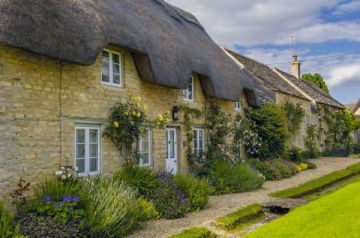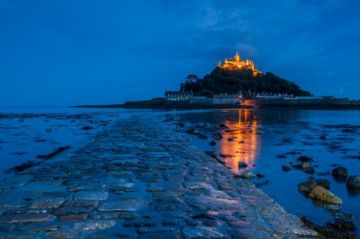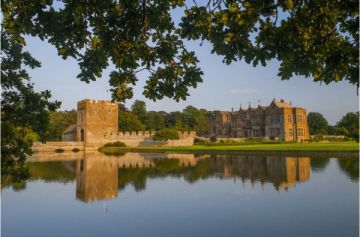Henry VIII left his mark on Oxford; after taking control of Christ Church from its unfortunate founder, Cardinal Wolsey. Henry abolished the study of canon law, instituting chairs for Medicine, Civil Law, Greek, Theology, and Hebrew. This marked a fundamental shift in emphasis for the University away from its monastic beginnings.
The Oxford Martyrs
The rule of Henry's daughter Mary was a time of terrible political and religious unrest in Britain. Mary was Catholic, and she tried fiercely to reverse the tide of Anglican reform begun by her father. Many prominent church leaders and reformers were burned at the stake, none more visibly than Bishops Latimer and Ridley, and Archbishop Thomas Cranmer.
The three men were tried for heresy and condemned to death when they would not recant their Protestant faith. Latimer and Ridley were burned outside Balliol College on October 16, 1555. Latimer is supposed to have said to Ridley as the fire was lit, "Master Ridley, we shall this day light such a candle in England as shall never be put out".
Cranmer had to be held in prison until permission from the pope was obtained for his execution. While in prison he recanted his Protestantism, but the sentence was still carried out (probably because Mary wanted him dead).
When asked to affirm his recantation publicly, Cranmer retracted it and went courageously to the stake, where he thrust the hand that had signed the recantation into the blaze, saying, "This has offended. Oh! This unworthy hand".
The site of the burnings is marked by a cross set in the pavement outside Balliol College, and the Martyr's Memorial at the corner of Broad and St. Giles commemorates the event. The set of doors hung between the quads of Balliol bear scorch marks from the fire.
Oxford in the English Civil War
Oxford served as the home base for King Charles during the English Civil War. The town itself supported the Parliamentary cause, but the University was staunchly royalist. In 1642 the colleges of Oxford University gave most of their plate to Charles.
From 1642 to 1646 Charles stayed at Christ Church, while Queen Henrietta Maria had her court at Merton College. The other colleges hosted the rest of the royal court.
Oxford Trivia
Two roads connect modern Woodstock Road and the Banbury Road: North Parade and South Parade.
Contrary to common sense, North Parade runs south of South Parade. The reason for this apparent anomaly is that during the Civil War when Charles I was besieged by Cromwell at Oxford, North Parade represented the Royalist North Front, while South Parade was the Roundhead Southern Front.
Oxford suffered for its support of Charles when the war was over. In 1650 Oliver Cromwell was made Chancellor of the University, and many heads of colleges were replaced with Cromwell supporters. The following year Parliament ordered the city to be slighted - destroying its defences.
Some of Oxford's great architectural monuments date from the 18th century. Queen's College was rebuilt, as was Magdalen Bridge and Folly Bridge. New structures from this period included the Radcliffe Camera and Observatory, and the Clarendon Building.
Oxford History
Origins ~ Saxon ~ Medieval ~ Tudor and Civil War ~ Town & Gown
More Oxford Attractions


